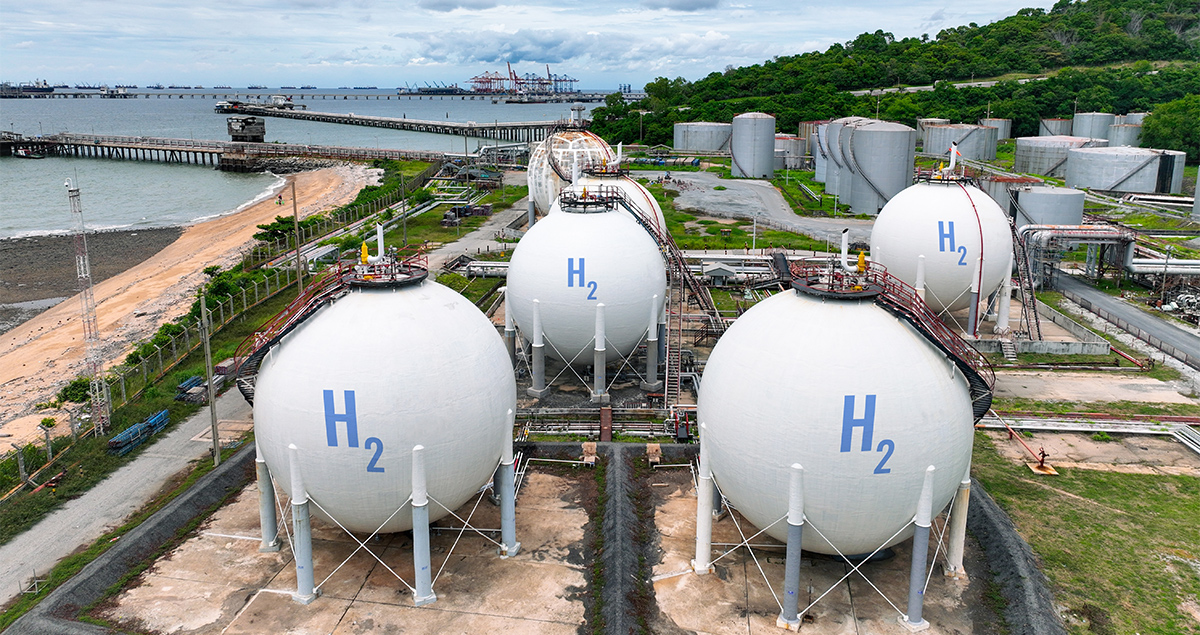Clean hydrogen: how close are we to delivering?

Clean hydrogen has long been viewed as the key to decarbonizing hard-to-electrify sectors. Yet, despite strong policy support across the globe and a flurry of pioneering projects, the future of hydrogen has been overshadowed by a combination of factors.
High electricity costs, a lack of offtake agreements, underdeveloped infrastructure and a reshuffling of geopolitical priorities have all created an environment of uncertainty for the fledgling industry. This year, final investment decisions (FIDs) are expected to stagnate amid developments such as US funding cutbacks and the cancellation or stalling of many projects, including in Europe.
Some experts suggest hydrogen is in a “trough of disillusionment”, but, in reality, we see a maturing industry on a “slope of enlightenment", adapting to new economic and political realities.
Supporting this view are recent reports from the International Energy Agency (IEA). The Agency’s Global Hydrogen Review 2025 expects low-emission hydrogen production to grow strongly over the next five years. Output from projects that are operational today or have gained FID is set to reach 4.2 million tonnes per year (Mtpa) by 2030, a fivefold increase on 2024. In addition, the IEA’s latest investment update puts the pipeline of projects that have received FID at around $8 billion in 2025, some 70% above previous investment levels.
Yet, compared to other low-carbon and emission-free technologies, these investment levels are comparatively low. In this environment, policymakers continue to play a crucial role in getting hydrogen on a more substantial growth trajectory.

Accelerating clean hydrogen deployment
Over the past few years, momentum in the development of clean hydrogen has shifted. While high energy prices and geopolitical tensions have played a significant role, more defined regulation has also had a substantial impact on the market.
Since 2020, we have observed the EU and national governments doubling down on clean hydrogen regulation and funding, including making the rules for fund allocation clearer.
One example is the EU’s Delegated Act on the Production Rules for Renewable Fuels of Non-Biological Origin (RFNBOs). It defined more clearly where and when renewable energy could be used to produce hydrogen that would, in turn, be considered renewable or “clean”. However, in doing so, the act also restricted access to renewables for electrolytic hydrogen producers, raising operating costs.
Several hydrogen projects that were already well underway at this point simply ran afoul of these and similar regulatory provisions, becoming unviable.
While we absolutely need stable, transparent rules and clear definitions to give investors and developers greater confidence to proceed, policymakers could come toward the hydrogen industry. By making targeted changes to reduce the regulatory burden and protect first-mover investments, they could help speed deployment of clean hydrogen projects — without risking credibility.
Similarly, the EU’s Delegated Act for low-carbon hydrogen and fuels was an opportunity to bring consistency to the overall clean hydrogen market and enable investments in clean hydrogen. Yet, this final piece in the EU’s hydrogen regulatory toolbox could also lead to missed economic opportunities with default values picked over project-specific ones or uncertainty around methane emissions and grandfathering rules.
On a positive note, it looks like the next Hydrogen Bank auction will be open to low-carbon electrolytic hydrogen production for the first time — certainly a step in the right direction.

Encouraging lead markets for clean products
Alongside regulatory constraints, market dynamics are also affected by uncertainty surrounding the evolution of demand.
Solid offtake agreements will be needed for securing an FID, but lead markets — the final end users — willing to absorb the low-carbon premium are ultimately key to ensuring future success.
We need initiatives such as 'low carbon' or 'carbon neutral' labels to entice early adopters to trade up and drag the broader market along. This needs to be complemented by stringent energy efficiency and emission standards, as well as carbon pricing.
The implementation of the EU’s RED III quotas by the member states would have gone a long way toward encouraging heavy emitters to speed their transition away from fossil fuels to cleaner alternatives. RED III raises the EU renewable energy target from 32% to a minimum of 42.5% by 2030. This includes sector-specific mandates for the use of renewable energy, including hydrogen, in industry and transport across the member states.
One would have expected that the adoption of quotas around the union would increase demand for clean hydrogen significantly by the end of the decade. However, the transposition has proved to be difficult and heterogeneous across member states, with many lawmakers lagging in their implementation.
While demand for hydrogen is on a growth curve, hard-to-abate sectors like the heavy industries and transportation account for less than 0.1% of demand — far from the 40% it needs to reach by 2030 to keep on track to net zero by 2050, according to the IEA.
We cannot only set obligations at the level of the hard-to-decarbonize sectors. Their products need to find markets that recognize their low-carbon value and absorb the premium.

Predictability and realism
While a greater sense of realism has emerged in the industry, the signals are pointing to hydrogen remaining an essential pathway for the energy transition. However, to boost its momentum, major hurdles need to be overcome — and policymakers are very much in the driving seat.
While regulation is essential for building up the hydrogen sector, predictability will be crucial to escaping the current impasse and accelerating growth. Rules must be clear, fit for purpose and, above all, achievable to reduce risks and secure investment.
Looking ahead to 2040, Europe will need to reconcile its sustainable, secure and competitive objectives — and create a level playing field where hydrogen can realize its potential.
![]()





